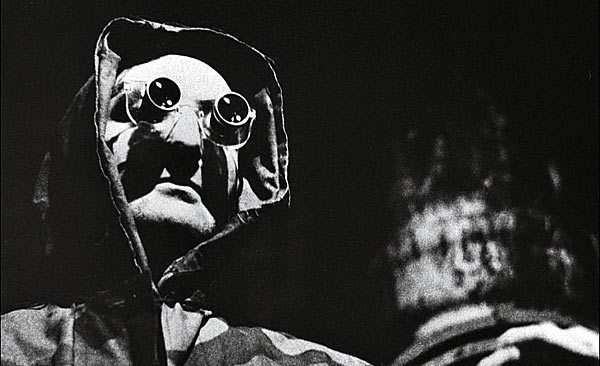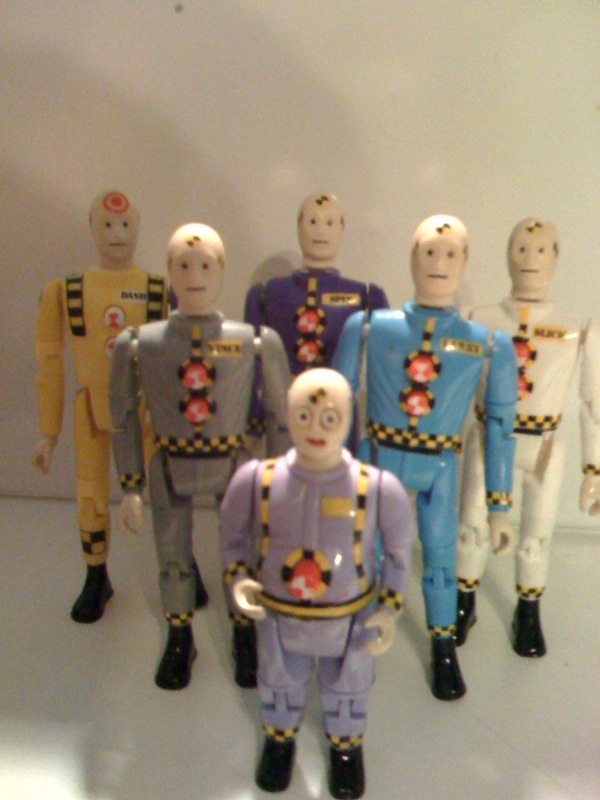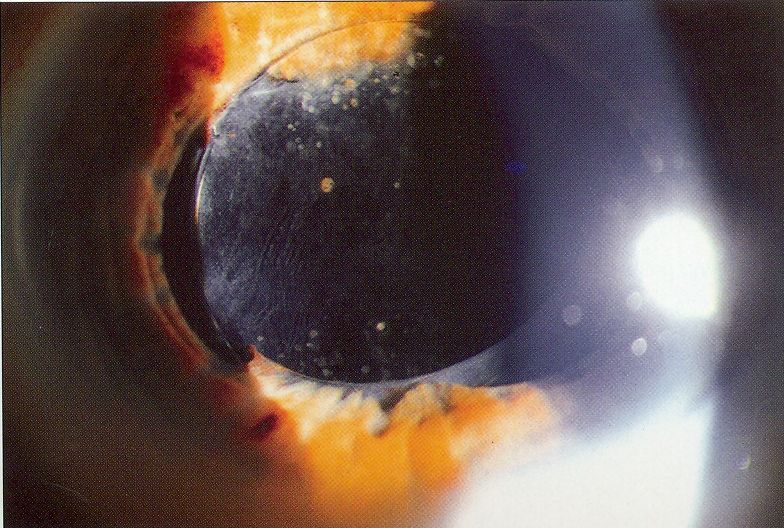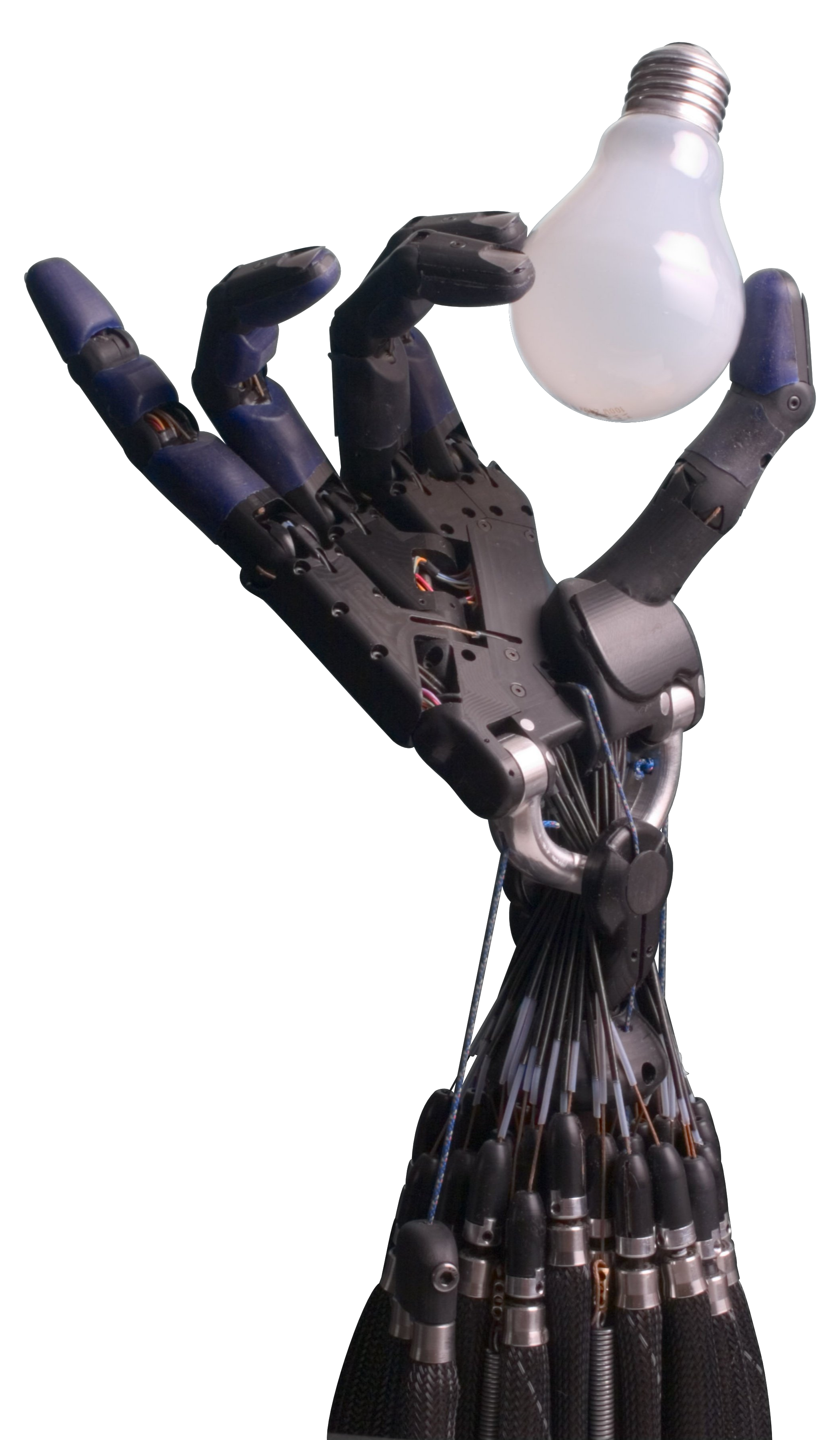Architects use ‘bots to build. (Thanks IEEE Spectrum.)
You are currently browsing the yearly archive for 2011.
From “Supercomputer Predicts Revolution,” Peter Murray’s Singularity Hub report about the prognosticating powers of software:
“A new type of software has been shown to predict revolutions by mining news reports around the world. Retrospectively mining the news for the past 30 years the software indicates points at which the likelihood for a revolution is high. When put to the test – bingo! – the software showed spikes just before the recent Egyptian and Libyan upheavals. It was also able to sift through world news to retrospectively pinpoint Osama Bin Ladin’s location to within 200 km. In the emerging science of ‘culturomics’ that tracks cultural trends through the written word, the software was the first to demonstrate that news coverage can be used to predict future events.”
Tags: Peter Murray
From Conor Friedersdorf”s Atlantic piece about energy-saving motion sensors, now widely used in Spain:
“In the vast majority of tapas bars and restaurants I patronized, and in train stations and other public places too, I’d open bathroom doors to find it dark inside, start to fumble for a light switch, and remember that practically every last light is now triggered by motion sensors, a cheap alternative to the status quo here: leaving the lights on all the time, whether anyone is in the bathroom or not.
The motion sensor was also put to use in at least one shopping mall that I visited in Valencia. With four or five stories of stores, it had a bunch of escalators to transport shoppers from one level to another. Instead of running them at full speed all the time, however, they slowed down considerably when no one was on the steps. Tripping an invisible beam while walking onto the bottom step, it sped up immediately to normal escalator speed, costing patrons no time and saving energy.”
As the foundering Boston Red Sox attempt to collapse across the finish line and win the American League Wild Card, Steve Wulf of ESPN profiles their genius owner, John Henry, who applied objective analysis in business before bringing it to big-market baseball. An excerpt:
“Henry loves facts — ‘I don’t read fiction’ — so here are some. He was an asthmatic farm boy who grew up worshipping a miner’s son named Stan Musial; a philosophy major who fell under the thrall of Indian individualist Jiddu Krishnamurti; a rock musician who shaved his eyebrows to play a space alien in a rock opera; a mathematical whiz who was banned from Las Vegas blackjack tables; a commodities trader who watched soybeans grow into a beanstalk that eventually yielded ownership of some of the most storied franchises in Major League Baseball, NASCAR (Roush Fenway Racing) and the Premier League (Liverpool FC). You have to make this stuff up.
But it’s not just Henry’s bio that makes him interesting. He’s a whole host of contradictions. He uses dispassionate analysis in pursuit of his own passions. He’s a serious thinker given to practical jokes, a shy fellow who counts Bill Clinton, Michael Douglas and Steven Tyler among his friends, an owner of a 164-foot yacht who will dash from the owner’s box above home plate at Fenway to the first-aid room to check on a fan who’s been hit by a foul ball. He may be a 62-year-old father of two girls (a 14-year-old and a 1-year-old), but he has never lost his own childlike sense of wonder.
He’s also the kind of person who politely declines personal interview requests, then spends hours thoughtfully responding to e-mail questions — at 12:32 a.m. To a query about the major influences in his life, he writes, quoting mythologist Joseph Campbell, ‘If you follow your bliss, you put yourself on a kind of track that has been there all the while, waiting for you …’ That’s what led me into the financial world. I started John W. Henry & Company because I enjoyed applying mathematics to markets, and it was a profound challenge that resonated within me.”
••••••••••
John Henry enters the womb-like studio of wealthy workaholic, Charlie Rose:
Tags: John Henry, Steve Wulf

"They took a woman named Jane Longley, who was made the victim of a series of indignities, not the least of which was the application of a coat of tar and feathers."
You have to assume plumage and adhesives were exceedingly cheap during the 19th century, because you could not walk down the street without seeing some poor soul being turned into a makeshift bird. One such case of tarring and feathering was covered in the September 15, 1860 edition of the Brooklyn Daily Eagle, in an article that was reprinted from the Detroit Free Press. An excerpt:
“An occurrence of a disgraceful nature took place a few days since in the town of Romulus, in this county, of which we yesterday received some particulars. A large party consisting of men and boys with a few women, turned out in the night in disguise, and went to the house of a man named Jeremiah Ganung, from which they took a woman named Jane Longley, who was made the victim of a series of indignities, not the least of which was the application of a coat of tar and feathers, and an impromptu ride upon a fence rail. She was banged and knocked about in naked condition, until from the abuse and exposure she nearly fainted, and was thought to be in a dying condition.
While she was in this state the party gathered around her and entered into a conversation in regard to the probable consequences of their conduct, when from the familiar tone of their voices she recognized a number of them. She afterward gave the names of thirty-nine persons, who have been arrested and held to answer. Among them was the daughter of the man with whom she lived, and several other women.
The alleged cause is a disposition on the part of the woman to ill treat the children belonging to the family. She had lived with Ganung several years, and has borne three children by him, having previous to the death of his wife entered the family as a domestic. It is charged the he desired to get rid of her, and took this means, as he offered no resistance when the crowd entered his house, but allowed them to take her from his bed and do what the chose with her. He has been arrested.”
Tags: Jane Longley, Jeremiah Ganung
Leonard Cohen turned 77 this week. Prince Charles is a fan:
“Now my friends are gone and my hair is gray”:
Tags: Leonard Cohen, Prince Charles
From “Quantum Leap,” a 2006 Fortune interview with DARPA legend Stuart Wolf, about life in 2030:
“She awakes early on the morning of April 10, 2030, in the capable hands of her suburban Chicago apartment. All night, microscopic sensors in her bedside tables have monitored her breathing, heart rate, and brain activity.
The tiny blood sample she gave her bathroom sink last night has been analyzed for free radicals and precancerous cells; the appropriate preventative drugs will be delivered to her hotel in Atlanta this evening. It’s an expensive service, but as a gene therapist, Sharon Oja knows it’s worth it.
She steps into the shower. The tiles inside detect her presence and start displaying the day’s top headlines. The manned mission to Mars is going to launch ahead of schedule. U.S. military drones have destroyed another terrorist training camp using smart dust. A top Manhattan banker has been found guilty of fraud and sentenced to 10 years of low tech.
And today is the 20th anniversary of the very first quantum computer.
Sharon laughs. It is her 24th birthday, and she has little idea what the world was like before the qubits – the smallest pieces of quantum information – took over.”
Tags: Stuart Wolf
Sanjhih Pod City in Nothern Tapei, with its abandoned and worn Futuro houses, is like no other place on Earth. Construction began in 1978 on what was supposed to be a vacation paradise for the wealthy. But the project was abandoned while in progress, because of financial problems and the accidental death of many workers, which convinced people the property was haunted. An excerpt from a story about the futuristic ghost town in the Taipei Times:
“One of the designers behind the UFO houses spoke exclusively to the Taipei Times. Lin, who only gave his family name, said that there were lots of rumors about the site, but most of them were false.
‘First of all, the site is definitely not haunted,’ Lin said, in reference to oft-heard rumors that many people have seen ghosts near the complex or the high number of unexplained traffic accidents on the nearby road.
There were also rumors that more than 20,000 skeletons were discovered at the site when construction work began and that it was the scene of several murders.”
••••••••••
LED kite + UFO Houses, Taiwan:
From “Is Facebook Forever?” Rebecca J. Rosen’s Atlantic article about the overwhelming reach of the most popular social-networking site:
“Social-networking sites are fragile, as MySpace and Friendster proved. Unlike Yahoo! and AOL, whose users can get more or less the same experience if there are millions of others like them or if they are the last ones on Earth, social-networking sites can shrivel quickly if the perception rises that people are leaving. But even if Facebook does someday flag, its reach and its repository may mean a different kind of decline than those of the social networks before it. Those houses, once abandoned, fell apart. But Facebook may be more like the house you moved out of when you went to college — a house you still stop by to check in from time to time, see how the neighborhood is doing, say hi to old friends. It’s no longer where you live, or the place you call home, but it’s never quite gone either.”
Tags: Rebecca J. Rosen
Walt Disney discusses robotics, 1963.
Tags: Walt Disney
From Jan Hoffman’s new New York Times article about Skype-powered psychiatric sessions:
‘THE event reminder on Melissa Weinblatt’s iPhone buzzed: 15 minutes till her shrink appointment.
She mixed herself a mojito, added a sprig of mint, put on her sunglasses and headed outside to her friend’s pool. Settling into a lounge chair, she tapped the Skype app on her phone. Hundreds of miles away, her face popped up on her therapist’s computer monitor; he smiled back on her phone’s screen.
She took a sip of her cocktail. The session began.
Ms. Weinblatt, a 30-year-old high school teacher in Oregon, used to be in treatment the conventional way — with face-to-face office appointments. Now, with her new doctor, she said: ‘I can have a Skype therapy session with my morning coffee or before a night on the town with the girls. I can take a break from shopping for a session. I took my doctor with me through three states this summer!'”
••••••••••
“The unique service of the future, like the picture phone” (1960s):
Roger and Gene review the Mitsubishi VisiTel Visual Phone, 1988 (at 8:45):
Tags: Gene Siskel, Jan Hoffman, Melissa Weinblatt, Roger Ebert
A few search-engine keyphrases bringing traffic to Afflictor this week:
- Old Print Articles: Dog catchers invite trouble (1894) + Teenager scalds cad with vitriol (1891).
- Featured Videos: Phil Donahue interviews Lucille Ball (1974) + Rona Barrett and Sir Clement Freud feud (1973) + Muhammad Ali discusses the first African-American President (1970s) + Cassius Clay and Liberace together + Evel Knievel visits Wonderama (1970s) + Dennis Hopper reads a poem to Johnny Cash (1970) + The history of transistors (1965) + The Three Stooges on NBC News (1975) + Wave Glider requires no fuel + How a Chinese typewriter works + Love Boat episode, even odder than usual + The Statler Brothers perform their unlikely hit (1965) + Fun on an omnidirectional treadmill + Claude Shannon’s amazing juggling machine.
- Recently Posted on NYC’s Craigslist: Both of us should probably be dieting + A ray of hope for Yahoo! + I tend to bury the lead + War on Drugs is officially lost + Clean the toilets good, Picasso + The Secret Service was probably already watching me.
- The NFL won’t change until a player dies on the field.
- The Teapublicans and the modern Silent Majority.
- Economist Alex Tabrrok opines on the new blockbuster Contagion.
- How military drones will be used in American law enforcement.
- Michael Crichton worried about technology outpacing ethics in 1999.
- Samsung employs the “2001 Defense” in dispute with Apple.
- Is Europe’s future impossibly bleak?
- What robots can gain from having fingerprints.
- Jonah Lehrer explains that the mind is not just located in the brain.
- An excerpt from Thomas Kuhn’s Copernican Revolution.
- Experiments in operating computers with brains instead of hands.
- Paul Dano has already had a remarkable film career.
- Samantha Smith was perhaps the most famous Cold War child.
- How and when the :-) emoticon was born.
- This week’s Afflictor keyphrase searches.
Its time (Stamford)
Dear secret service,
Please help me win the lottery, I’ve been nothing but good to myself and others around but I continually get shit on by everyone and my life has no direction. I will also accept a job. You should know who this is so call me.
Thanks
From Kate Moisse and ABC News comes this story about a breakthrough in our ability to visually reconstruct people’s memories:
“California scientists have found a way to see through another person’s eyes.
Researchers from UC Berkeley were able to reconstruct YouTube videos from viewers’ brain activity — a feat that might one day offer a glimpse into our dreams, memories and even fantasies.
‘This is a major leap toward reconstructing internal imagery,’ said Jack Gallant, professor of psychology and coauthor of a study published today in Current Biology. ‘We are opening a window into the movies in our minds.””
••••••••
“Reconstructing visual experiences from brain activities evoked by natural movies”:
Tags: Jack Gallant, Kate Moisse
Robots in Singapore are getting fingerprints. From popsci:
“Researchers at the National University of Singapore are enhancing robots’ sense of touch by mimicking the ridged and contoured surfaces of human fingertips. Fingerprints, it turns out, don’t just give humans better grip but also carry out a sensitive type of signal processing. By imparting that same kind of signal processing to robots, we could reduce the processing loads to robots’ CPUs and help them better identify objects through their shapes.
Fingerprints provide a unique identifier and a better means to hold on to objects, but they also shape the ways we sense and perceive the world around us. When we touch something, the ridges alter the vibrations moving through our skin such that nerve endings can better receive them. This serves as a kind of signal processing that allows the skin in our fingertips to provide richer information to our central nervous system than skin on other parts of the body.”
••••••••••
Hymie the Robot, Get Smart:
“Living with Robots,” Honda:
From a 1999 Playboy interview with writer/director Michael Crichton, who fretted, to great financial success, over science outpacing ethics:
Playboy:
In Jurassic Park, you looked at the potential hazards of DNA research. What’s your view of cloning?
Michael Crichton:
I think we’re a long way from cloning people. But I am worried about scientific advances without consideration of their consequences. The history of medicine in my lifetime is one of technological advances that outstrip our ethical systems. We’ve never caught up. When I was in medical school—30-odd years ago—people were struggling to deal with mechanical-respiration systems. They were keeping alive people who a few years earlier would have died of natural causes. Suddenly people weren’t going to die of natural causes. They were either going to get on these machines and never get off or—or what? Were we going to turn the machines off? We had the machines well before we started the debate. Doctors were speaking quietly among themselves with a kind of resentment toward these machines. On the one hand, if somebody had a temporary disability, the machines could help get them over the hump. For accident victims—some of whom were very young—who could be saved if they pulled through the initial crisis, the technology saved lives. You could get them over the hump and then they would recover, and that was terrific.
But on the other hand, there was a category of people who were on their way out but could be kept alive. Before the machine, ‘pulling the plug’ actually meant opening the window too wide one night, and the patient would get pneumonia and die. That wasn’t going to happen now. We were being forced by technology to make decisions about the right to die—whether it’s a legal or religious issue—and many related matters. Some of them contradict longstanding ideas in an ethically protected world; we weren’t being forced to make hard decisions, because those decisions were being made for us—in this case, by the pneumococcus.
This is just one example of an ethical issue raised by technology. Cloning is another. If you’re knowledgeable about biotechnology, it’s possible to think of some terrifying scenarios. I don’t even like to discuss them. I know people doing biotechnology research who have decided not to pursue avenues of research because they think they’re too dangerous. But we go forward without sorting out the issues. I don’t believe that everything new is necessarily better. We go forward with the technology while the ethical issues are still up in the air, whether it’s the genetic variability of crop streams, which is a resource in times of plant plagues, to the assumption that we all have to be connected all the time. The technology is here so you must use it. Do you? Do you have to have your cell phone and your e-mail address and your Internet hookup? I was just on holiday in Scotland without e-mail. I had to notify people that I wouldn’t be checking my e-mail, because there’s an assumption that if I send you an e-mail, you’ll get it. Well, I won’t get it. I’m not plugged in, guys. Some people are horrified: “You’ve gone offline?” People feel so enslaved by technology that they will stop having sex to answer the telephone. What could be so important? Who’s calling, and who cares?•
Tags: Michael Crichton
The Statler Brothers performing their 1965 ode to alienation, “Flowers on the Wall,” a favorite of Kurt Vonnegut (see: Palm Sunday) and Quentin Tarantino (see: Pulp Fiction).
I keep hearin’ you’re concerned about my happiness
But all that thought you’re givin’ me is conscience I guess
If I were walkin’ in your shoes I wouldn’t worry none
While you and your friends’re worryin’ bout me I’m havin’ lots of fun
Countin’ flowers on the wall that don’t bother me at all
Playin’ solitare till dawn with a deck of fifty one
Smokin’ cigarettes and watchin’ Captain Kangaroo
Now don’t tell me I’ve nothing to do
Last night I dressed in tails pretended I was on the town
As long as I can dream it’s hard to slow this swinger down
So please don’t give a thought to me I’m really doin’ fine
You can always find me here I’m havin’ quite a time
Countin’ flowers on the wall that don’t bother me at all
Playin’ solitare till dawn with a deck of fifty one
Smokin’ cigarettes and watchin’ Captain Kangaroo
Now don’t tell me I’ve nothing to do
It’s good to see you I must go I know I look a fright
Anyway my eyes are not accustomed to this light
And my shoes are not accustomed to this hard concrete
So I must go back to my room and make my day complete
Countin’ flowers on the wall that don’t bother me at all
Playin’ solitare till dawn with a deck of fifty one
Smokin’ cigarettes and watchin’ Captain Kangaroo
Now don’t tell me I’ve nothing to do
Don’t tell me I’ve nothing to do
Tags: Kurt Vonnegut, Quentin Tarantino, The Statler Brothers
A young Brooklyn woman, wronged by a married man, scalded him with sulfuric acid, according to an article in the August 24, 1891 Brooklyn Daily Eagle. An excerpt:
“Mamie Roach, a young woman who claims to have been wronged by the man whom she trusted, took justice into her own hands last night and marked the man for life by pouring vitriol on his face and neck. She was arrested, locked up over night and she fainted in court this morning, but she was discharged from custody. As she was driven out of the yard of the court in a handsome coach with prancing steeds she appeared, to the unfortunates who were driven through the same gate, to be quite happy, although the flesh of her own hand and arm had been burned by the fluid that she procured for her victim, Charles Gebhardt, a conductor on the Union Avenue car line.
Mamie is 19 years old. She lives with her widowed mother at 27 Maujer Street, and is employed in Thomas’ shoe factory on Hewes Street where she earns $6 a week. She says James Preston, a young man who lives on Manhattan Avenue, near Newton Creek, kept company with her and Gebhardt was Preston’s friend. She quarreled with Preston three weeks ago, and since then she received attentions from Gebhardt. Last Friday, she alleges, he asked her to go to Rockaway with him. She refused, but she did go with him to the Novelty Theater. Her mother sat up all night waiting for her return. At noon on Saturday the mother received the following letter:

"Gebhardt cried aloud with pain and he ran to Nicot's drug store, where oil was poured on the burns."
DEAR MOTHER–I now write a few lines hoping you will get this note. Last night I met Charles Gebhardt and we went to the theater. After coming out we went through Broadway to a saloon. He made me go in and drink champagne. I had such a feeling come over me that I was not able to walk. Then we took some car, though I don’t know which car, but the first thing I found myself away in some hotel on Myrtle Avenue. When I woke up I was struck dumb. I then told him I would not go home. Then he said, ‘Well, I would tell you the truth.’ He is a married man with three children. Well, you know I did not want to go home. You can’t blame me. Maybe by the time you get this I will have got rid of myself if I can easily do so. Oh, I think that must have been a put-up job between he and Jim, but never mind. I will be out of that. If I can get on his car I will fix him if I can. I will blow his brains out in the street, and then I will have satisfaction. Mamie.
Mrs. Roach hastened to the lower end of Union Avenue as soon as she had read the letter. There she found Mamie weeping on the sidewalk. ‘Mamie wanted me to go with her to see Gebhardt,’ said Mrs. Roach to an Eagle reporter. ‘I went out with her last evening to board his car. I did not know she had any vitriol. We got on his car at Messerole Street and as soon as Gebhardt came to where we sat Mamie screamed and dashed something in his face. She was very nervous and the fluid fell upon her and upon the dresses of several ladies. The poor child did not know what she was doing.’
When the girl threw the vitriol there was an exciting scene. Gebhardt cried aloud with pain and he ran to Nicot’s drug store, where oil was poured on the burns. Policeman Sweeney arrested Mamie. She and her victim were treated by the same surgeon at St. Catherine’s Hospital, and then Mamie said that Gebhardt had given her drugged champagne in a Broadway saloon and she knew nothing more until she awoke Saturday morning in a strange hotel on Myrtle Avenue, near the city lines. Her mother, she added, had induced her to take the revenge she had. She was searched and a bottle of laudanum was found in her pocket. She said she had intended to poison herself after she burned Gebhardt’s face. The police doubt she had any intention of taking the poison.
Gebhardt went home to his wife and children at 834 Flushing Avenue. He admitted that he had gone out to the Myrtle Avenue hotel with Mamie, but claimed that she had gone willingly and denied that he had drugged her.”
Tags: Charles Gebhardt, James Preston, Mamie Roach, Policeman Sweeney
Jack Paar and Liberace welcome Cassius Clay, who was known to sometimes be gassy. The future heavyweight champion (and future Muhammad Ali) was three months from his first bout with Sonny Liston. From a PBS Paar doc.
Tags: Cassius Clay, Jack Paar, Liberace, Sonny Liston
Free Person (Anywhere)
I am offering my services as a person to help you with anything that you need – for one hour only. This is for an art piece so I will be documenting whatever I end up helping you with. Platonic things only. Feel free to ask me to do absolutely anything! E-mail me a time and place that works for you plus a description of what you would like me to do.
Taking a spin on the omnidirectional treadmill.
It’s amusing (in a sad way) that the biggest story from the NFL last week was that a couple of New York Giants faked injuries to disrupt The Rams’ hurry-up offense. It was a minor footnote blown up into a huge sensation and the sport’s biggest story, a parallel one, was all but ignored. And that’s because sports reporters are part of the same machinery as the NFL, more concerned with keeping the cash register humming than offering any rational analysis.
Last Sunday, quarterback Michael Vick received a concussion and bit his tongue so badly that he was spitting up blood on the field. QB Tony Romo was also seriously injured and this (approximate) sentence was uttered on the NFL Network on Tuesday: “It’s been learned that Romo suffered a collapsed lung as well as cracked ribs. It’s not sure if he will play on Monday.”
The question sports reporters are asking: Will Romo play this Monday? The question they should be asking: Why the hell would Romo be playing this Monday? Why would he be playing a brutal car-crash sport just eight days after his lung–a vital organ–stopped working because it was so severely damaged in an on-the-field injury? I’m assuming a couple of talking heads asked these latter questions, but I guarantee they were in the vast minority. That’s because few people care about the players’ health and everyone cares about the violent diversion and, especially, the money. And, yes, Romo was just cleared to play this Monday.
I know there are other people in our society who risk their lives all the time, most notably members of the military, but the military is important and football is certainly not important. My assumption is this insane attitude will continue until a player dies on the field. Does anyone think that’s impossible?•
••••••••••
From Rollerball, 1975: “You know how the game serves us. It has a definite social purpose.”
Tags: Michael Vick, Roger Goodell, Tony Romo
Claude Shannon, who pretty much invented the Information Age, demonstrates one of his juggling machines in 1985.
Tags: Claude Shannon



















